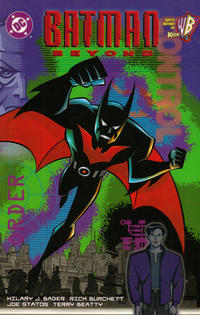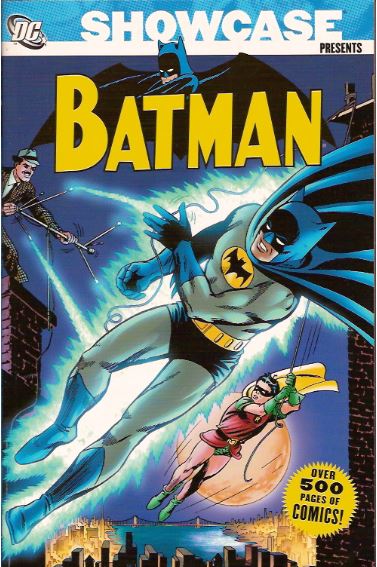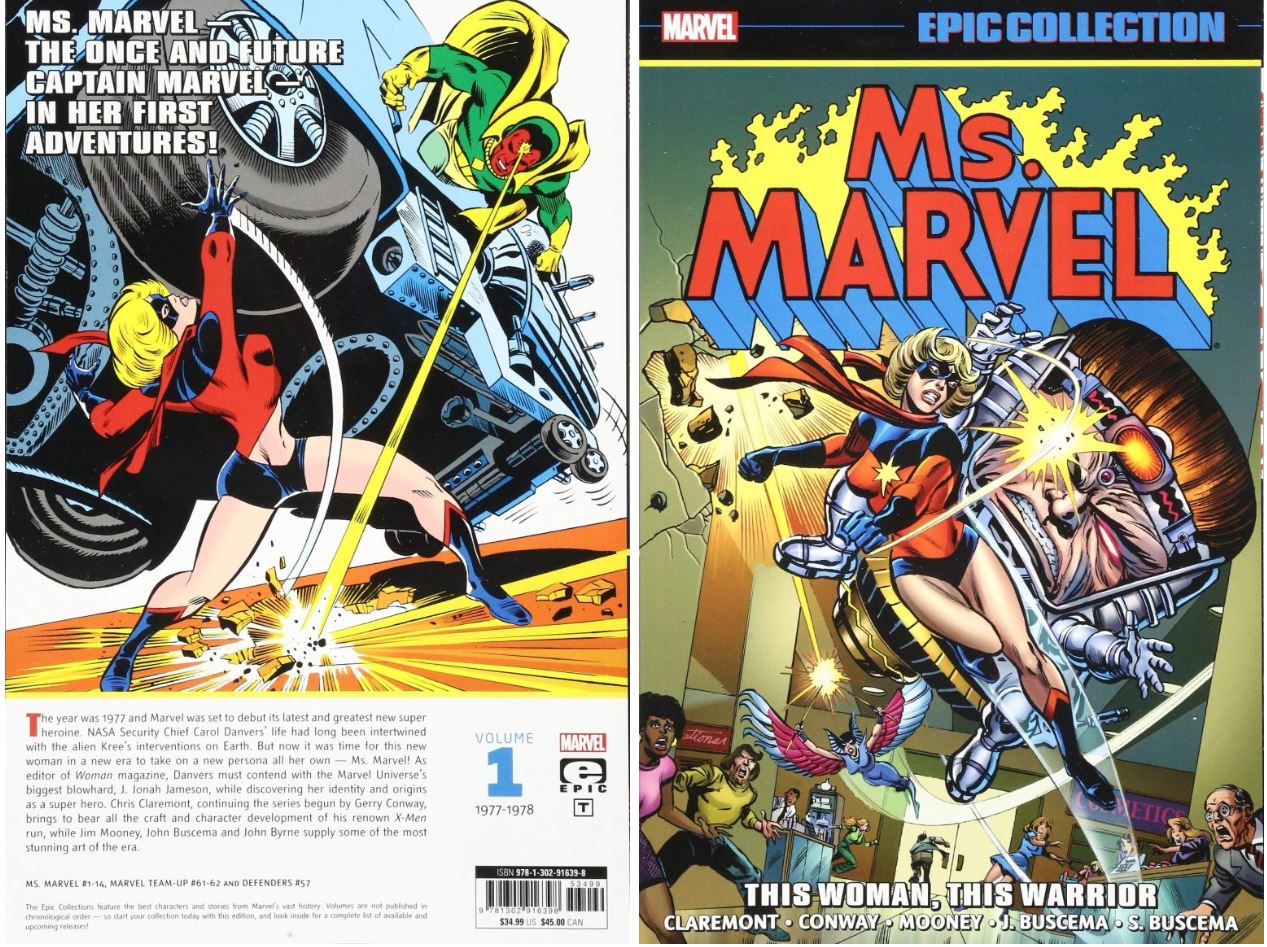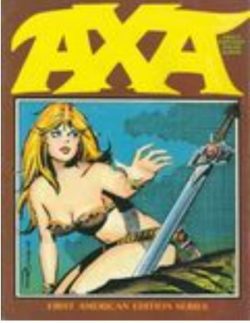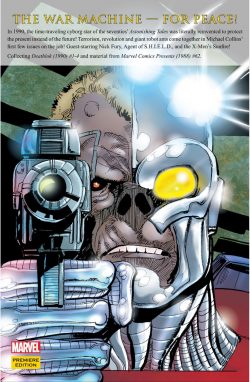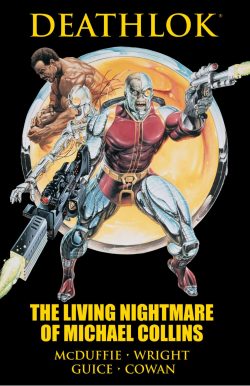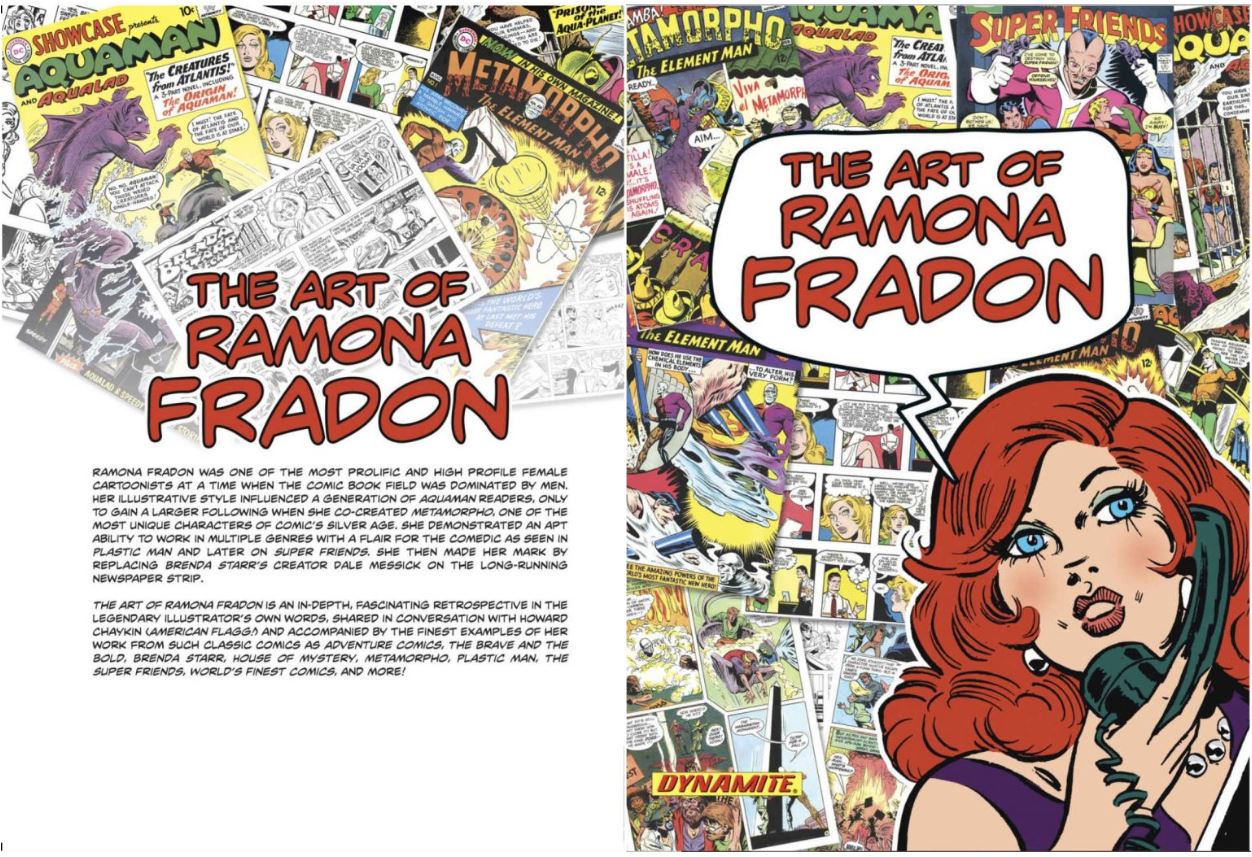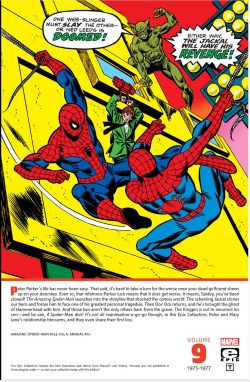
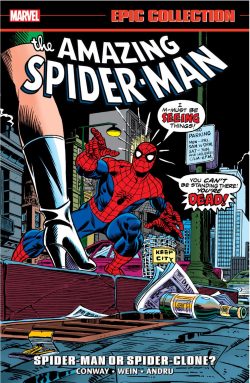
By Gerry Conway, Len Wein, Archie Goodwin, Ross Andru, Gil Kane, Sal Buscema, Mike Esposito, Frank Giacoia, Dave Hunt, John Romita & various (MARVEL)
ISBN: 978-1-3029-4874-0 (TPB/Digital edition)
Amazing Spider-Man was a comic book that matured with – or perhaps just slightly ahead of – its fan-base. This epic compendium of chronological webspinning wonderment sees the World’s Most Misunderstood Hero facing even greater and evermore complex challenges as he slowly recovers from the trauma of losing his true love and greatest enemy in the same horrific debacle. Here you will see all that slow recovery comes unstuck.
Once co-creator Stan Lee replaced himself with young Gerry Conway, the scripts acquired a far more contemporary tone (but feeling quite outdated from here in the 21st century): purportedly more in tune with the times whilst the emphatic use of soap opera subplots kept older readers glued to the series even when bombastic battle sequences didn’t. Moreover, as a sign of those times, a hint of cynical surrealism also began creeping in…
For newcomers – or those just visiting thanks to Spider-Man movies: super smart-yet-ultra-alienated orphan Peter Parker was bitten by a radioactive spider during a school outing. Discovering strange superhuman abilities which he augmented with his own natural chemistry, physics and engineering genius, the kid did what any lonely, geeky nerd would do with such newfound prowess: he tried to cash in for girls, fame and money. Making a costume to hide his identity in case he made a fool of himself, Parker became a minor media celebrity – and a criminally vainglorious one. To his eternal regret, when a thief fled past him one night he didn’t lift a finger to stop him, only to find when he returned home that his guardian uncle Ben Parker had been murdered.
Crazed and vengeful, Peter hunted the assailant who’d made his beloved Aunt May a widow and killed the only father he had ever known. He discovered to his horror it was the self-same felon he had neglected to stop. His irresponsibility resulted in the death of the man who raised him, and the traumatised boy swore to forevermore use his powers to help others. Since that night, the wallcrawler tirelessly battled miscreants, monsters and madmen with a fickle, ungrateful public usually baying for his blood even as he perpetually saves them.
The high school nerd grew up and went to college. Because of his guilt-fuelled double-life he struggles there too but found abiding love with cop’s daughter Gwen Stacy… until she was murdered by the Green Goblin. Now Parker must pick up the pieces of his life…
This compelling compilation reprints Amazing Spider-Man #143-164 and Annual #10: collectively covering cover-dates April 1975 to January 1977, and confirming an era of astounding introspective drama and captivating creativity wedded to growing science fictional thinking. Stan Lee’s hand-picked successor Gerry Conway moved on after reaching a creative plateau, giving way to fresh authorial guide Len Wein. Thematically, tales moved away from sordid street crime as outlandish villains and monsters took centre stage, but the most sensational advance was an insidious scheme which would reshape the nature of the web-spinner’s adventures to this day.
For all that, the wallcrawler was still indisputably mainstream comics’ voice of youth, defining being a teen for young readers of the 1970s, tackling incredible hardships, fantastic foes and the most pedestrian and debilitating of frustrations. Now its later and still-grieving Parker is trying to move on as we open with Amazing Spider-Man #143 (by Conway, Ross Andru, Frank Giacoia & Dave Hunt) in ‘…And the Wind Cries: Cyclone!’ Peter is in Paris to deliver a ransom and save kidnapped publisher J. Jonah Jameson but resorts to his arachnid alter ego to deal with a hyper-fast French supervillain. The run-of-the-mill tale’s real kicker comes from an overly-fond farewell expressed by “casual chum” Mary Jane Watson: a kiss that finally shifts traumatised Peter’s thoughts from his recently murdered beloved.
The creative team capitalised on the situation after Spider-Man saves Jonah and clobbers the kidnappers before Pete returns to New York and his usual daily travails as #144 launches a shocking new worry. ‘The Delusion Conspiracy’ (ASM #145) builds the tension and focuses on a baffled girl’s confusion and terror at everyone’s reactions when she comes home and the entire world screams ‘Gwen Stacy is Alive… and, Well…?!’
With Gwen somehow resurrected and Peter on the edge of a mental breakdown, Aunt May is hospitalised just in time for another old foe to strike again in ‘Scorpion… Where is Thy Sting?’, but the real kick in the tale is irrefutable scientific and medical reports proving the increasingly bewildered Miss Stacy is not an impostor but the genuine article…
In Spider-Man #147 Peter finds some answers as further tests prove Gwen is actually a true human clone (remember, this was new, cutting-edge stuff in 1975) but all too soon he’s distracted by another bad-guy with a grudge and hungry to prove ‘The Tarantula is a Very Deadly Beast’ (inked by Mike Esposito & Dave Hunt). It’s all part of a convoluted, utterly byzantine revenge scheme conceived by a malign enemy. When the hero is ambushed by a mesmerised Gwen at the behest of the archfiend, ‘Jackal, Jackal, Who’s Got the Jackal?’ at last discloses shocking truths about one of Peter’s most trusted friends prior to the Delusion Conspiracy explosively concluding in #149’s ‘Even if I Live, I Die!’ (Andru & Esposito art).
Learning he and Gwen had been covertly cloned by their biology teacher Miles Warren, the Amazing Arachnid must defeat his alchemical double in a grim, no-holds-barred identity-duel, with neither sure who’s the real McCoy. The battle eventually results in the copy’s death. Maybe. Perhaps. Probably…
The moment of unshakeable doubt over who actually fell informs anniversary issue Amazing Spider-Man #150, with Archie Goodwin, Gil Kane, Esposito & Giacoia taking the hero down memory lane and up against a brigade of old antagonists to decide whether ‘Spider-Man… or Spider-Clone?’ survived that furious final fight, before debuting regular scripter Len Wein joins Andru & John Romita Sr. to launch a new era of adventure…
After disposing of his duplicate’s corpse in an incineration plant, Spider-Man finds time to let Peter reconnect with his long-neglected friends. However, a jolly party is soon disrupted as blackouts triggered by a super-menace lead the wallcrawler into the sewers for a ‘Skirmish Beneath the Streets!’ It results in his almost drowning and nearly being ‘Shattered by the Shocker!’ (Esposito & Giacoia inks) in a conclusive and decisive return engagement before a moving change-of-pace tale sees a blackmailed former football star giving his all to save a child in ‘The Longest Hundred Yards!’ (Andru & Esposito).
However, it’s left to Spider-Man to make the true computer-crook culprits pay, after which #154 reveals ‘The Sandman Always Strikes Twice!’ (with art by Sal Buscema & Esposito) – albeit with little lasting effect – until devious murder-mystery ‘Whodunnit!’ (Buscema & Esposito) cunningly links three seemingly unconnected cases in a masterful “Big Reveal”…
A long-running romance-thread culminates in the oft-delayed wedding of Pete’s old flame Betty Brant to reporter Ned Leeds, but the nuptials are sadly interrupted by a new costumed crook in ‘On a Clear Day, You Can See… the Mirage!’ (Wein, Andru & Esposito), even as a sinister hobo who was haunting the last few yarns strode fully into the spotlight…
In the past, a protracted struggle for control of New York between Dr Octopus and cyborg gangster Hammerhead escalated into a full-on gang war and small-scale nuclear near-disaster, with Spidey and his aunt caught in the middle. The devilish duel concluded with an atomic explosion and the seeming end of two major antagonists. However, #157 exposed ‘The Ghost Who Haunted Octopus!’ as the long-limbed loon turns again to May Parker for salvation.
With Peter in attendance, the many-handed menace seeks to escape a brutal ghostly stalker tormenting him, but their unified actions actually liberate a pitiless killer from inter-dimensional limbo in ‘Hammerhead is Out!’, leading to a savage three-way showdown with Spidey ‘Arm-in-Arm-in-Arm-in-Arm-in-Arm-in-Arm with Doctor Octopus!’ to save the horrified Widow Parker.
Courtesy of plotter Wein, scripter Bill Mantlo and Kane, Esposito & Giacoia, a new insectoid archfoe debuted in Amazing Spider-Man Annual #10, where ‘Step Into My Parlor…’ depicts obsessed Spider-hater J. Jonah Jameson hiring outcast, exceedingly fringe-science biologist Harlan Stilwell to create yet another tailor-made nemesis to destroy the webslinger.
Meanwhile, the detested hero is ending a vicious hostage situation manufactured by psychotic Rick Deacon, but when the killer escapes and breaks into a certain lab he’s transformed into a winged wonder hungry for payback on the webspinner in ‘…Said the Spider to the Fly!’
In the monthly mag Wein, Andru & Esposito fired the opening shot of an extended epic as a criminal inventor – and one of the wallcrawler’s oldest enemies – recovers Spidey’s long-ditched, satisfactorily drowned “Spider-Mobile”, tricking it out to hunt down its original owner in #160’s ‘My Killer the Car!’…
Having narrowly escaped doom and debacle in equal measure Spidey met a new friend and clashed with an old one, although rising star Frank Castle was reduced to a bit-player in Amazing Spider-Man #161-162 (October & November 1976), as the All-Newly-Reformed X-Men were sales-boosted via a guest-clash in ‘…And the Nightcrawler Came Prowling, Prowling’, wherein the Amazing Arachnid jumps to a completely wrong conclusion after a sniper shoots a reveller at Coney Island. By the time moody mutant Nightcrawler explains himself – in tried-&-true Marvel manner by fighting the webspinner to a standstill – old skull-shirt has turned up to take them both on before mutual foe Jigsaw is exposed as the real assassin in concluding episode ‘Let the Punisher Fit the Crime!’
The mystery villain behind much of Spider-Man’s recent woes is at last exposed in ‘All the Kingpin’s Men!’ as a string of audacious tech-robberies lead the hero to another confrontation with the deadly crime lord. This time, however, the Machiavellian mobster is playing for personal stakes. His son has been on the verge of death for months and his remedy is to electronically transfer the Spider-Man’s life force into the ailing patient. Discarded after the process, Peter Parker’s impending ‘Deadline!’ is extended by old friend Curt Connors until they can explosively set things right…
To Be Continued…
As always the narrative delights are supplemented by added extras which this go-round include contemporary house ads, Romita & Joe Sinnott’s cover/back cover, frontispiece, contents page and double-page cast pin-up from 1975 tabloid edition Marvel Special Edition #1: The Spectacular Spider-Man, and the Andru- & Esposito-rendered entry for The Mighty Marvel Bicentennial Calendar 1976 (June) and Ronn Sutton’s cover for George Olshevsky’s 1982 The Marvel Comics Index: The Amazing Spider-Man and the 1985 Frontispiece by John Allison. Also on view are Andru’s prankish private joke pencils for the big reveal in ASM #144, editorial ‘Of Jackals and Juxtaposition’ from The Spider’s Web column in #153, and original art pages by Punisher design sketch by Romita and original art pages by Kane, Romita Andru & Esposito.
Blending cultural veracity with superb art, and making a dramatic virtue of the awkwardness, confusion and imputed powerlessness most of the readership experienced daily resulted in an irresistibly intoxicating read, especially when delivered in addictive soap-styled instalments, but none of that would be relevant if Spider-Man’s stories weren’t so utterly entertaining. This action-packed collection relives many momentous and crucial periods in the wallcrawler’s astounding life and is one all Fights ‘n’ Tights fanatics must see…
© 2023 MARVEL.
